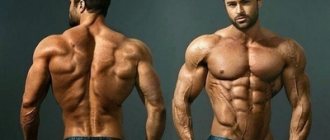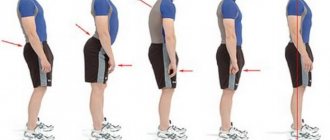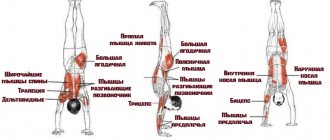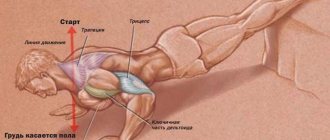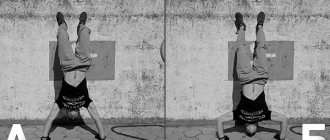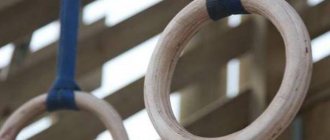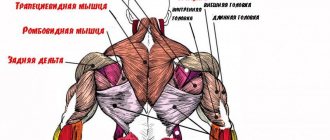Working at a computer for many hours in one position makes the shoulder muscles stiff and even leads to pain. And the problem is not just a sedentary lifestyle. Stressful situations also contribute to chest posture, which leads to slouching and upper back tension.
The neck and upper back experience enormous stress. And a pose with a constantly bowed head and drooping shoulders aggravates the situation - the muscles and joints in this area suffer.
A little anatomy lesson
The shoulder complex includes the humerus, collarbones, thoracic spine, rib cage, and shoulder blades. His strength is the huge range of movements he can perform. The disadvantage is dependence on many ligaments and muscles at once. If these muscles are overused or improperly used, the shoulders lose mobility.
To avoid pain, all four joints must function properly.
At a minimum, it is worth stretching your shoulders throughout the day: moving back and forth, up and down, rotating. But if you still feel tense in the evening, 16 simple exercises will help you. Karena Wu, physical therapist, owner of a physical therapy center in New York.
These exercises will help you relax and improve your flexibility. But first you should pay attention to your posture.
Posture correction
From a standing position, lean forward slightly, hunching slightly. Do not overdo it. Then straighten up. Repeat 3-5 times.
Ask someone to place their thumb between your shoulder blades and remember the sensation at this point so that next time you can concentrate on it without assistance.
To position your shoulder blades correctly, move your shoulders up, back and down. Without fanaticism, a shift of just a centimeter in each direction is enough. Repeat 10 times.
Exercises for the muscles of the neck and shoulders
Chin Pull
This movement is especially good for those who tend to keep their head in one position all day long. Pull your chin forward and then move it smoothly back. Keep your chin parallel to the floor. Repeat 10 times.
Neck rotation
Tilt your head to the right and turn to the left through an inclination towards the chest. Then back to the right. Repeat the exercise 5 times in each direction. But don't make a full turn - bending back only increases tension in the neck.
Shoulder rotation
Straighten your back. Raise your shoulders, then lower them back and lift them back to the starting position in a smooth circular motion. Do the exercise 10 times in one direction, and then another 10 in the opposite direction.
Side neck stretch
While sitting, tilt your right ear towards your right shoulder. Place your right hand on your left temple and apply light pressure. To increase tension, hold the seat straight with your left hand. Hold for 30 seconds and repeat on the other side.
"Castle" behind
Raise your right arm and lower it behind your back, bending it at the elbow. With your left hand, reach down to your right shoulder blade. Try to grab the fingers of your right with your left hand.
If it doesn’t work out, pick up a towel and slowly move along it. Hold for 30 seconds and then repeat on the other side.
Shoulder stretch
Move your straight right arm to the left side in front of you. With your left hand, lightly press the upper part of your right hand to better stretch the muscles. Hold for 5-10 seconds, then relax and repeat with the other arm.
Shoulder rotation in opposite directions
Press your back against the wall so that your shoulder blades are relaxed. Bend your elbows at a right angle, pressing your biceps against the wall. Without changing the position of your elbows, raise your right hand up to touch the wall with the outside of your palm. Turn your left hand down in the same way. Return to the starting position and perform the exercise in the other direction: left hand up, right hand down. Repeat for about 30 seconds. Try to maintain a right angle at your elbows.
Stretch against the wall
Place your palms on the wall in front of you so that your arms form a right angle with your body. Step back slightly so that your body is tilted and your arms are extended. Don't push against the wall or raise your arms too high.
Angle neck stretch
While sitting, turn your head to the right 45 degrees and look down towards your armpit. Place your right hand behind your head and apply gentle pressure to better stretch the muscles. Additionally, you can grab the seat of the chair with your left hand. Repeat 3 times in each direction.
Raising arms from the sides
Press your back against the wall, arms along your body. Raise your arms straight out to the sides along the wall, forming a T. Continue upward until your thumbs touch. Make sure your upper back remains straight. Smoothly lower your arms to the starting position. Repeat 3 times.
Lower "castle"
Place your hands behind your lower back and lock them together. Open your chest and squeeze your shoulder blades slightly together. Hold for 10 seconds. Then unclasp your hands, switch your top thumb and repeat.
Rotation by hand
Standing with your right side to the wall, perform smooth large circles with your right hand without losing contact with the wall. Repeat 10 times. Then stand against the wall with your left side and repeat for your left arm. Watch your posture.
Reverse Prayer Pose
Place your hands behind your back and try to fold your palms into a prayer gesture (palm to palm). Hold for 30 seconds. If stretching does not allow, do a simpler version: bend your arms and place your right elbow on your left palm, and your right palm on your left elbow. Hold for 15 seconds, then switch top hands and hold for another 15 seconds.
At three points
Get on all fours. Along the floor with your left hand, reach to the side between your right hand and right thigh. Allow the chest to move, but do not change the position of the hips. Hold for 15 seconds at the point where your hips begin to shift. Return to the starting position and repeat on the other side.
Sphinx pose
Lie face down. Bend your arms, place your palms down parallel to your body, fingertips pointing forward. Without lifting your arms, lift your upper back without straining your lower back. Keep your elbows close to your sides and don't throw your head back. Lift your right hand off the floor and extend it forward. Aim to raise your biceps to ear level. Make sure your shoulders and neck are not tense. Stay in this position for 5 seconds. Then lower your right arm to the starting position and repeat with your left.
Lateral twist
Lie on your right side with your legs bent, arms extended in front of you perpendicular to your body. The back is relaxed. Raise your left arm and move it behind your back in an arc, opening your chest. Follow the movement of the hand with your eyes, but do not move your hips. Hold for 5 seconds and then return to the starting position. Repeat 10 times. Turn over to the other side and perform the exercise 10 times in the other direction.
All of these exercises are quite simple, but they are very effective for relaxing the shoulder muscles. Perform the entire complex after a hard day at work or in parts every evening, and tension in the neck and shoulders will decrease. This means that your head will become lighter and your mind will become more alive.
Since childhood, we have learned everything: you need to keep your back straight. Our mothers explained this by saying that it was healthier - and, of course, beautiful. Growing up, those of us who have spent years studying ballet, rhythmic gymnastics and music school forget about our posture, as well as most of the annoying parental advice. But even despite this, we “have a lot of experience behind us,” “we lend a shoulder to a friend,” “we go shoulder to shoulder,” and every now and then we “throw something off our shoulders.” The shoulder complex is always visible, it cannot be hidden or forced to give a false signal. Nevertheless, it remains the least studied in the science of nonverbal communication. What can shoulders tell you?
V is for vitality
The ancient Greeks were unlikely to have knowledge of body language, but they undoubtedly knew a lot about physical beauty and health. As British zoologist and ethologist Desmond Morris
, author of The Body Language Bible, and
David Givens
, American anthropologist and author of Body Language, the Language of Love, emphasize, it is broad, muscular shoulders, such as those of the statue of David, that symbolize strength and masculinity. Ancient Greek sculptures of a special type - kouros - depicted entirely young men with a V-shaped figure. “Genetically,” says Morris, “we endow men with broad shoulders and narrow hips with positive qualities. This physique tells us that its owner is healthy and full of strength. By choosing such a man as a partner, a woman, as it were, receives biological advantages.” At the same time, we see true femininity in emphatically fragile, weakly defined shoulders, which with their entire appearance demonstrate the defenselessness of their owner.
However, talking about shoulders as a “factor of attractiveness” is not entirely fair - not all men are born athletes, and the fragility of women is completely subjective. True beauty is determined by posture more than genetics. This term seems to be clear to everyone, but is still ambiguous. From a physiological point of view, the primary task of posture is to protect the musculoskeletal system from overload and injury through the alignment of body segments and muscle balance. However, we usually mean by this our bearing, our manner of holding ourselves, the familiar and comfortable position of our body, accepted unconsciously. A person with a straight back and head held high in the eyes of others is more confident, successful, and noble. The expression “royal bearing” speaks for itself.
Harold Reilly
, one of the world's preeminent physiotherapists, has taken a global approach to this issue. In his opinion, the history of the evolution of the human race can be told in terms of posture. Because as soon as the anthropoid stood on his hind legs and reached for the stars, he became a man. “From an anatomical point of view, good posture and a straight back are actually not completely natural,” says the specialist. “However, in human beings the forces of evolution have always been directed upward, which is expressed in ideas, ideals and posture. Man developed incomparable mastery of the hands and fingers - this occurred as a result of replacing the natural horizontal posture, which supported the arrangement of the body's organs and the direction of blood flow to the legs, with a vertical one. It not only ensures the direction of blood flow to the brain, but also enhances the flow of stimuli into it. And besides, it frees up your hands.” The main thing that Reilly is sure of is that posture largely reflects our reaction to life.
Reasons that most often lead to injury
All age groups of people, both adults and children, suffer injuries to the shoulder joint. The most common causes leading to traumatic joint damage are:
- heavy physical activity – there is a partial rupture of the ligamentous apparatus, which occurs mainly in athletes;
- age-related changes due to metabolic disorders - a decrease in the elasticity of the tissue of the shoulder joint, leading to tearing of the ligaments;
- the formation of osteophytes - bone processes that arise as a result of metabolic processes in the body;
- heavy physical labor - constant tension of the muscular and ligamentous apparatus leads to joint fatigue, which provokes tears and sprains;
- falling onto outstretched straight arms;
- a sharp blow to the shoulder;
- sudden movements or strong abduction of the hand.
Read also….
Video course “Royal Posture” by A. Bonina: who are these exercises suitable for, reviews, tips Any injury is always accompanied by severe pain. This condition requires mandatory treatment, both medicinal and physical.
Direct communication
For a long time, psychologists and physiotherapists have studied the influence that various factors have on the shoulder complex - negative thinking, emotional shock, environment.
Their findings are not exactly surprising, but they do make you think. “The most beneficial effect for the shoulders is positive thinking and creative action,” writes Harold Reilly in his book “Drugless Therapy. Edgar Cayce's Recipes. — On the other hand, negative thoughts and unfavorable circumstances can not only depress the mind and soul, but also affect posture. The connection between a straight back and a sense of danger and a depressed mood is well known to psychiatrists and psychologists.” It is no coincidence that such epithets as drooping, disheartened, depressed, broken, dejected, hunched over - all primarily describe a sluggish posture. On the contrary, when we hear good news or achieve success in one area or another, we unconsciously “straighten up” and walk straight, holding our heads up proudly. Being a slouched winner is just as strange and absurd as being sad with good posture. It’s easy to check: just consciously straighten your back, raise your chin high and think about something bad or make yourself upset. And then do the same thing, but with your shoulders and head down - the difference will be obvious. The whole trick is to learn to straighten yourself in moments of weakness and apathy, to bring this habit to automatism, and also to be more attentive to others - to notice by the condition of the shoulders what mood a person is in, and to act in accordance with the non-verbal information received. “In addition to poor posture caused by professional postures and inattention to daily life, we must also take into account factors caused by adverse reactions to the environment: disappointment, malaise or negative thinking with the so-called absent gaze,” continues Harold Reilly. “The way we walk, stand and sit gives us away. Fortunately, usually the person counteracts most of the negative influences and gets back up as straight as he is used to.” However, some negative factors have a longer lasting effect and can cause certain changes in posture. The specialist calls our defensive position “turtle neck”: the shoulders are rounded, the head and neck are pressed into them - this is how we reflect the blow. Another characteristic position is the figure of a person who has suffered defeat. He wanders around, hunched over and hanging his head, as if he is irresistibly pulled down. The older we get, the more we begin to hunch over, as if demonstrating to the world our defeat in this life. Therefore, it can be argued that as long as we maintain our posture, we remain young and purposeful - both externally and internally.
A shell for each
The relationship between the structure and dynamics of the body, as well as the psychological characteristics of the individual, were studied and described in most detail by the founders of body-oriented psychotherapy - Wilhelm Reich
and
Alexander Lowen
. Reich persistently emphasized the unity of body and mind, always included problems related to the human body in his psychotherapeutic studies, and subsequently developed the concept of the “characteristic shell.” The psychologist paid special attention to chronic energy blockages on the physical level, which we use to eliminate or minimize unfinished emotional experiences. He called these protective mechanisms “character armor,” or “muscular armor,” meaning chronic muscle tension that isolates a person from unpleasant emotions.
Another important concept in body-oriented therapy is “soil under your feet,” or “grounding,” which refers to energetic contact with the earth, a feeling of support that provides stability and the ability to move. “Grounding of feelings” is, first of all, contact, awareness and the absence of blocking the bodily manifestations of these feelings, explains psychologist Irina Malkina-Pykh
. — The opposite of “grounding” is “suspending.” A person is said to be in limbo when he is involved in an emotional conflict that paralyzes and prevents him from taking any effective action to change the situation. In such conflicts, two opposing feelings arise, with one blocking the expression of the other.” According to the specialist, posture, or the position of the upper body, is one way to see "suspense" physically. There are several common conditions of such “suspense”, but the most common is what Alexander Lowen called the “hanger” type: the shoulders are raised and resemble a square, the head and neck are tilted forward, the arms dangle, not secured in the joints, the chest is also raised, as if the body and the truth hangs on an invisible hanger. “Raised shoulders are an expression of fear,” says Irina Malkina-Pykh. - If this is a person’s habitual state, it means that he maintains a posture of fear from which he cannot get rid of - he simply does not realize that he is frightened. The situation that caused this has already been forgotten, and the emotions themselves have been suppressed.” Such habitual postures do not emerge from a single experience; they imply long-term insecurity. The specialist continues the thought of Harold Reilly: “The position of fear is compensated by moving the head forward. The person seems to be counteracting the threat, or at least trying to look out for it. Although this pose is actually a denial of fear, it says: “I don’t see anything worth fearing.”
Psychologist Svetlana Bronnikova
believes that the position and mobility of the shoulders and arms are of fundamental importance for our self: “It is the connection of the body with the arms that speaks of the individual’s good adaptation to reality - the ability to establish contacts with others like him, to protect one’s interests, but at the same time - the ability to share, experience the joy of mutual contact.” According to her, with mental fragility, too much emotional vulnerability, there is no connection between the hands and the body - they “live” separately. Alexander Lowen saw the reason for this in the strong tension of the shoulder joints - the shoulder girdle in such people seems to be “frozen” and takes a limited part in the movement of the arms.
Since mental and physical phenomena are considered equivalent, inertia on one level implies the same inertia on the other. “Therefore, the first step in bodily psychotherapy is a deeper awareness of ourselves, an understanding of what we are doing and what we are thinking,” summarizes Irina Malkina-Pykh. “In the process of therapy, when the awareness of emotions repressed into the body comes, changes begin to occur at the physiological level.” Core body-centered therapy techniques using breathing, touch, tense body postures, movement exercises and awareness help resolve problems with muscle tension, energy blockages, breathing restrictions and ultimately provide the opportunity to weaken the “muscle armor.”
Massage
If we highlight the most effective ways to quickly relieve muscle spasms and tension, neck and shoulder muscles, then only massage will be more effective than exercise. Moreover, even a self-performed neck and shoulder massage will give good results and help alleviate the condition. If you resort to this type of massage, then it is worth remembering the following principles, violation of which can lead to negative consequences and is simply undesirable:
- There is no need to press too hard with your hands when working on the cervical-collar area, this can lead to dizziness;
- The massage session should be short, and if possible, you should monitor the skin to stop after redness appears in the work area;
- During the massage, the neck should be in a neutral position; it is highly undesirable to tilt your head forward;
- Never massage the neck and shoulder area if you have pimples or blackheads.
There are a large number of video tutorials online from well-known specialists that allow you to perform high-quality massage yourself. However, this will only be a temporary measure to alleviate the situation; the full effect can only be obtained by conducting a whole course of massage from an experienced doctor. Experts advise performing massage courses (8-10 sessions) every six months as a preventative measure.
You can watch a video of self-massage of the shoulder girdle below:
Reading on shoulders
Highly raised shoulders in combination with a slightly hunched back and retracted chin - helplessness, fear, nervousness, uncertainty.
Shoulders protruding forward - a feeling of weakness and depression, an inferiority complex.
Freely dropped shoulders - a feeling of confidence, control of oneself and the situation.
Shoulders laid back - determination to act actively, strength, enterprise, but at the same time - overestimation of one's own capabilities.
TEXT: Yulia Sivakova
Asymmetrical shoulders or their downward slope are most likely a sign of stooping or curvature of the spine. This problem is faced by people who are forced to spend a long time sitting at a computer, or schoolchildren and students who sit at a desk for a long time.
It is possible and necessary to correct the defect, because poor posture affects not only the appearance, but also the functioning of the internal organs. Among the options for “raising” the shoulders, the following have proven themselves:
· breathing exercises. Often, posture disorders are associated with various somatic or psychological problems. For example, people who are depressed even breathe differently - with small, irregular breaths. Proper breathing - deep and even - can help your posture just as much as physical exercise;
Breathe deeply, take long breaths, and you will see how your posture aligns before your eyes. This happens due to the filling of the lungs with air, which causes the chest to expand.
· good old “plank”. This physical exercise has a positive effect on the condition of the spine and tones the muscles. If you do it systematically, it will help correct your posture and “raise” your shoulders;
· classic exercises with dumbbells. They need to be performed in two stages: overhead, bringing your arms together, and pressing up in a “sitting” position. You should start with 10-15 times a day, three approaches. To begin with, use dumbbells from 2 kg, gradually increase the load.
In addition to the exercises described, swimming is a good way to correct posture and relax cramped back and shoulder muscles. Moreover, it is not necessary to make it just another exercise, just enjoy and swim for your pleasure.
This method of relaxation will also be useful for neuroses and depression, which often cause drooping shoulders.
Physiotherapy and acupuncture
Electrophoresis for neck muscles to warm up and relieve pain
Physiotherapeutic procedures are carried out after acute symptoms have resolved. Their task is to improve microcirculation of fluids in the affected area, activate lymph outflow, and stimulate regeneration. When removing muscle tension, use:
- magnetic therapy;
- laser therapy;
- darsonvalization;
- stimulation with low frequency current.
In most cases, electrophoresis is prescribed. During the procedure, medications are delivered to the deep layers of tissue using currents. Pain and swelling are eliminated, immunity is improved.
Acupuncture or acupuncture is one of the methods in the treatment of neurology, spasmed muscles, and radicular syndrome. The method has a minimum of contraindications and side effects. The introduction of thin needles into special points relieves pain and normalizes metabolic processes.
Acupuncture is performed only by a doctor, but an effective replacement for the procedure is the use of Lyapko and Kuznetsov applicators. Devices with plastic and metal needles have a relaxing effect on the muscles. Mats or bolsters are suitable for relaxing the upper back, shoulders and neck.
One shoulder is higher than the other: how to fix it
Asymmetrical shoulders are the first sign of scoliosis. This is a serious disease that can manifest itself at a young age in the form of curvature of posture, and at an older age – pain and disruption of the functioning of many organs. Posture problems affect the heart, lungs, and stomach.
It is very difficult to cure scoliosis without the help of specialists. Here you need the help of an osteopath or chiropractor. To correct your posture, you can use a special corset, but it will not correct your shoulders, but will help consolidate the result and “teach” the muscles to keep your back straight.
As children, we all heard from our relatives: “Keep your back straight!” The adults were right, because keeping your back healthy is easier than dealing with spinal problems in adulthood. This instruction must be followed now, which will save you from many troubles.
All conscious human movements begin in the brain, the so-called motor cortex is responsible for them, and each part of the body is responsible for its own area. The more neurons there are in a particular part of the body, the more important it is for a person’s mental life, the more space its projection occupies in the motor cortex. These areas of responsibility can be visually represented in the form of Penfield’s homunculus: funny, right? It is striking that this homunculus has disproportionately large hands.
From a psychological point of view, it is the hands that are responsible for “the way a person deals with the world” - including the ways of expressing one’s emotions: remember how violent joy is expressed? The man is gesticulating wildly and waving his arms. Anger? A person fights, pushes, and violates other outrages. And productive activity most often involves hands: a good worker differs from a bad one in that the former has “golden hands”, while the latter has “hands growing out of his ass.” That is, the importance of hands in a person’s mental life cannot be overestimated.
Archimedes also said: “Give me a fulcrum, and I will turn the Earth over!” For the arm, such a fulcrum is the shoulder - or more precisely, the bones of the shoulder girdle, scapula and collarbone, and the muscles connecting them to the bones of the arms, ribs and spine. It is these muscles that bear the load not only when it is necessary to ensure free, authentic movement of the hand - but also when it is necessary to block all this movement, or at least ensure its accuracy and precision, lack of emotional freedom. The adductor and abductor muscles tense with almost equal force and block each other’s action.
Often such tension becomes habitual, which indicates that some part of the emotions is not habitually recognized, but those muscles that are responsible for their expression remain blocked. They are shown in this picture. It is clear that in the case of prolonged habitual tension, it is in these places that problems begin.
When a person has become accustomed to some kind of tension over many years, it is often impossible to relax it through an effort of will. Then you can go another, paradoxical way: if you strain the already tense muscles strongly enough, strain them with all your might, after a while the strength runs out, extreme inhibition sets in, and the muscle relaxes by itself. At the moment of relaxation, it ceases to “protect” you from the emotions blocked in it, and there is an opportunity to feel and realize them.
Awareness of blocked emotions
- Listen to the initial state of your body. What emotions, feelings, sensations do you have now? Pay special attention to the sensations in the shoulder girdle.
- Stand close to some closet firmly planted on the ground, make sure that your feet are shoulder-width apart, your body is absolutely straight, your back is straight - and experiment with the position of your hands. Rest your hands on the cabinet in front of you, as if pushing it forward. Turn your back to him and, as it were, push him away from you back, or to the side, or even up - still making sure that your back is completely straight, and you act only with your hands. You can change your position in space relative to the cabinet using your legs (turn your face, back or side towards the cabinet), and change the position of your arms. This is all, the body always remains an even “column”. Your task is to find the movement that will maximize the unpleasant sensation of tension in the shoulder girdle.
- What kind of movement did you find? If the closet were lighter, what would you do with it using this movement? Did you push the cabinet forward, swipe it back, throw it up, pound it into the ground? This is probably the very movement that you block in stressful situations - the closet in this case acts as a metaphor for the stressor.
- As you exhale, begin to make the movement you have found with maximum force, accompanying it with a sound appropriate to the situation. Use all your strength to perform this movement, and even when it seems to you that you can’t do it anymore, try to strain yourself even more, and even harder, until your shoulder relaxes spontaneously.
- At this moment, allow your body to do what it wants - if you want to fall on the floor, provide yourself with this opportunity, if you want to pound pillows, that’s also not a question - and listen to the emotions that are growing inside. These are exactly the feelings that you block in “everyday life”.
- Getting to know them is just the beginning. Next, you have to learn to allow yourself to experience and express these feelings, as ecologically as possible, and this is usually a very long story, since the ban on experiencing any feelings often arises in childhood. But even a journey of a thousand miles begins with the first step.
If we turn to folk wisdom, it assures us that the burden of responsibility usually lies on our shoulders. It is worth considering that with our hands we establish relationships with the world - a process that, in principle, can bring pleasure, and normal responsibility is part of this process: each of us will have to answer for all our actions (and inactions), but this is the harmony of life . Responsibility for oneself is inescapable, but, as you know, two deaths cannot happen, but one still cannot be avoided. This is not a load that can block the shoulders.
If the responsibility falls heavily, then the following reasons are possible:
- Or we take responsibility for what we cannot change and what we cannot control. Then the tight shoulder girdle is an attempt to protect yourself from feelings of powerlessness, from sadness and fear of your own weakness.
- Or we forbid ourselves to change even what we can change. Then a tight shoulder girdle is an attempt to prohibit oneself from strength, aggression, protecting one’s own interests, not taking care of oneself, and protecting others from our strength.
- Of course, there is also a combination of these two reasons: when we unsuccessfully try to change what we cannot change, so as not to change what we can. “Gena, let you carry me, and I’ll carry your suitcase!”
By becoming familiar with the feelings that have been blocked in the shoulder girdle, you can decide which option is closer to your case, and consciously decide whether you want to learn to deal with blocked feelings differently, experience them, or prefer to pay the price for them preservation outside the access of consciousness.
Webinar “Body blocks”
dedicated to deciphering the psychological meaning of physical symptoms. With the help of the information received at this webinar, you will be able not only to understand the meaning of the internal conflict, which is expressed in the form of a bodily block, but also to find ways to resolve it.
“If you slouch like that, no one will marry you!” My grandmother.
"Everybody Lies" House MD
As a child, my grandmother never tired of repeating: “Straighten up, keep your back straight! Turn your shoulders back, chin higher, neck straight. Look at yourself in the mirror - you’re a girl!” Of course, my grandmother knew little about the non-verbal language of our bodies. It’s just how she was taught as a child in the distant 30s of the 20th century at the Institute of Noble Maidens. But she understood perfectly well what impression a person with beautiful posture makes on others.
When we talk about nonverbal body language, we most often pay attention to the face and hands, less often to the feet. We almost never look at our shoulders, because we simply don’t know that they can reveal fear, uncertainty, depression and even lies. based on nonverbal body language.
Joe Navarro, a former FBI employee, shares his observations, which over twenty-five years of service have accumulated into several books;)
Sports nutrition for recovery – why is it so necessary?
It is important to understand that if you have already begun to feel pain or discomfort, and your muscles often contract in spasms, especially during prolonged sitting, then this already indicates the presence of problems. They never occur quickly and are the result of systematic violations. Most often, the causes and main catalysts are lack of exercise (sedentary lifestyle), as well as a poor diet. If nothing can be done about sedentary work, then it will not be difficult to influence nutrition. If we highlight the main weak points in the diet that provoke problems with the neck-shoulder area, then it is worth noting:
- Lack of vitamins and microelements;
- Lack of protein foods and amino acids;
- Constant deficiency of healthy fats.
The easiest way to fill all the missing substances is with regular supplements. They contain everything you need in the right dosage. For example, any vitamin and mineral complex will include all the necessary substances that muscles and bones need. It is also extremely important to get the full range of amino acids that will maintain muscle tone. Several types of supplements are suitable for this, from regular whey protein to amino acid complexes and BCAA. Most often, doctors recommend a protein that has a complete amino acid profile and is guaranteed to give the body everything it needs.
The most important supplement is omega-3 fatty acids. If omega-6 enters the body in sufficient quantities, then doctors note that most people on the planet have a slight or severe deficiency of omega-3. This is an incredibly important component that affects the condition of bones, muscle tissue, metabolic processes, etc.
If you are already experiencing pain and problems in the neck or shoulders, then it is best to pay attention to chondroprotectors. Complex preparations that include chondroitin and glucosamine sulfates, as well as methylsulfonylmethane or MSM, have proven themselves to be the best. These are the only possible substances that can penetrate the joint tissue and slowly restore its structure. They are considered necessary for both treatment and prevention.
If you doubt whether you need sports nutrition, we recommend watching the video:
We recommend: a site with sports nutrition and help from specialists.
Force
As I already said, Joe Navarro worked for quite a long time in the FBI and dealt not only with ordinary criminals, but also with psychopaths. During conversations with prisoners, he observed their behavior - facial expressions and gestures. His mother was as wise as my grandmother, and always demanded that her son have a straight back and straight shoulders. Women naturally have a positive reaction to men with a V-shaped figure (broad shoulders, narrow hips). In nature, this means that he has excellent health and remarkable physical strength - a sort of alpha male.
A man with a straight back and broad, straight shoulders looks strong and even seems a little taller than he is.
One of the psychopathic criminals once told Navarro: “Silverbacks don't go after silverbacks, they go after everything else.” (silverbacks are the alpha males of gorillas with silver hair on their backs) - that is, victims are usually chosen from the weak and insecure. Squaring your shoulders is a sign of confidence and strength. And even if they are not as wide as we would like, a person with a confident gait and squared shoulders is still much less likely to become a victim than a slouched person with drooping shoulders and a bowed head. This look is almost a direct invitation to the bad guys.
Depression
Look at the child who returned from school after serving a sentence or with not very good grades. What does he look like? Usually a hunched back and drooping shoulders are added to a lowered gaze. This unpleasant state passes quite quickly (before the first interesting cartoon) and the child is again cheerful and cheerful - his eyes are shining, his shoulders are straightened! People suffering from prolonged depression can remain in this situation for much longer - days, weeks and even months. Their shoulders are always slumped and they hardly move them. They look like they barely stick to the skeleton and can fall off if a person makes even one sudden movement.
Relieving neck muscle spasms using medication
Treatment for muscle spasms in the neck is selected taking into account the cause and symptom of the disease. In case of severe pain, injections of antispasmodics are prescribed intramuscularly. Special medications – muscle relaxants – will help relieve muscle tension. They affect the central nervous system, relax muscles, and relieve pain. The tablets have a pronounced effect:
- Mydocalm - quickly relieves muscle tone, recommended for adults and children from 3 years of age.
- Sirdalud - prescribed for osteochondrosis, hernia and chronic diseases of the spine.
- Tizanide - helps with severe spasms, radicular syndrome.
Using non-steroidal anti-inflammatory drugs will help relieve pain and swelling. After taking them, compression of nerve endings will decrease and normal blood circulation will be restored. The use of local agents with a warming and analgesic effect is indicated:
- Finalgon;
- Fastum-gel;
- Capsicam;
- Viprosal.
The components of the ointments reduce inflammation, promote vasodilation and blood flow. The doctor may also prescribe antispasmodics, vitamins and mild sedatives.
Enticement
While men use squared shoulders to show strength and confidence, women use this body part to attract men. Oriental dancers, dancers at the carnival in Brazil - they all actively use their shoulders. Can you imagine a dancer at a Brazilian carnival with her shoulders slumped and motionless? Open shoulders attract men, and women actively use this, without even knowing it. One of the most striking examples, in my opinion, is the movements of Marilyn Monroe!
If a girl is not confident in herself, wearing a dress or blouse that reveals her shoulders will make her feel uncomfortable and most likely begin to slouch.
The need to perform gymnastics for the shoulder joint
Special gymnastics, for any pathology of the shoulder joint, must be carried out under the supervision of a specialist. Therapeutic exercises for the shoulder joints, correctly selected, help inhibit the inflammatory process and its progression.
The positive effect of exercise therapy on pathological processes in the shoulder joint is as follows:
- active movements in the joint increase and are restored;
- tissue nutrition in the affected area improves;
- muscle tone is restored;
- strengthening the ligamentous apparatus of the joint;
- the range of motion in the joint is restored to its original level;
- the development of inflammatory and degenerative processes in the joint tissues is stopped, and the pain syndrome accompanying the disease is relieved.
